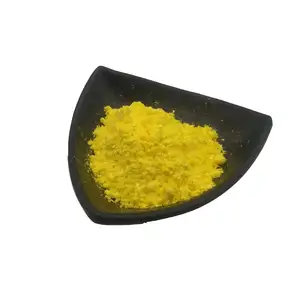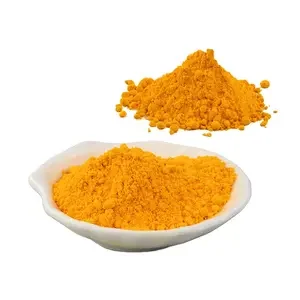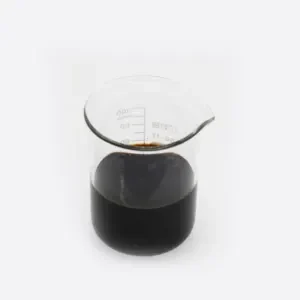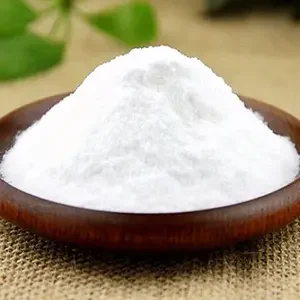| Name: | Berberine Hydrochloride | CAS No.: | 633-65-8 |
| Molecular Formula: | C20H18NO4.Cl.H2O | Molecular Weight: | 407 |
| Assay: | 97%, 98% by HPLC | Density: | 1.654g/cm3 |
| Appearance: | Yellow needle-like crystals | ||
| Plant sources: | Thorn Coptis | ||
| Melting Point | 200°C | ||
| Solubility: | Soluble in water, insoluble in benzene, ether and chloroform | ||
Coptis root increases blood flow to the extremities and has been shown to have laxative properties. Coptis Root Extract Berberine promotes a healthy liver by increasing the flow of essential enzymes.
Coptis also helps relieve pain and inflammation. Coptis Root Extract Berberine has been used to treat digestive dysfunction, disorientation, dysentery, high fever, inflammation of the mouth, insomnia, irritability,
ear infections and heart palpitations. Traditional Chinese herbalists use Coptis to treat gastrointestinal problems, diarrhea, hypertension, and bacterial infections.
Rhizomes of coptis purging fire detoxification, heat dampness efficacy when used as a traditional Chinese medicine, coptis can be used to cure heat-toxin, high fever, irritability,
diarrhea and dysentery, mouth sores, ulcer boils drug embolism. Pharmacological tests to prove, coptis has the function of antibacterial and antiviral,
antiprotozoal role. Coptis can lower blood pressure, expansion of coronary artery. Coptis has content of berberine, other coptisine of alkaloids,
also containing obakunone Treats lactone ingredients.Coptis is used for disharmony of liver and, the vomiting.
Function
1. Berberine is used for damp-heat syndrome of the large intestine manifested as diarrhea, dysenteryand tenesmus.
2. Berberine is used for acute febrile diseases with exces-sive pathogenic fire and heat manifested ashigh fever, dysphoria,unconsciousness anddelirium.
3. Berberine is used for suppurative infections on the body surface, such as sores, carbuncles, furuncles and boils, septicemia induced by furuncu-losis, swellings and pain in the ears and eyes, canker sores in the mouth, exudative skin infections andpruritus.
Application
1. This product has recently found that anti-arrhythmic effect. Berberine on hemolytic streptococcus, Staphylococcus aureus, Neisseria gonorrhoeae, and Freund, Shigella dysenteriae have antibacterial effect, and enhances white blood cell phagocytosis.
2. Berberine hydrochloride (commonly known as berberine) has been widely used to treat gastroenteritis, bacillary dysentery and so on, tuberculosis, scarlet fever, acute tonsillitis and respiratory infections also have a certain effect.
| We can also provide other plant-based pesticide products | ||
| Product name | CAS | Product name |
| Matrine 1%-98% | 519-02-8 | Bacillus subtilis |
| Rotenone 5% 40% | 83-79-4 | Bacillus licheniformis |
| Toosendanin 1% 2% | 58812-37-6 | Bacillus amyloliquefaciens |
| Stemonine 1% | Bacillus polymyxa | |
| Sanguinarine 2% 40% | 2447-54-3 | Bacillus megaterium |
| Osthole 10% 98% | 484-12-8 | Bacillus Laterosporus |
| Veratrine 1% | 8051-02-3 | Trichoderma harzianum |
| pyrethrin 25% 50% 70% | 8003-34-7 | Trichoderma viride |
| berberine hydrochloride 97% | 633-65-8 | Bacillus pumilus |
| Oxymatrine 98% | 16837-52-8 | Paecilomyces lilacinus |
| Total Matrines 70% | Bacillus mucilaginosus | |
| Emodin 98% | 518-82-1 | Beauveria bassiana |
| Physcion 10% | 521-61-9 | Metarhizium anisopliae |
| Tea Saponin 85% | Bacillus thuringiensis | |
| Celastrus angulatus 6% | Organic fertilizer starter | |
| Azadirachtin 38%-41% | 11141-17-6 | |
| Limonin | 1180-71-8 | |
| Dried pyrethrum flower | ||
| Brassinolide | 72962-43-7 | |





Reviews
There are no reviews yet.